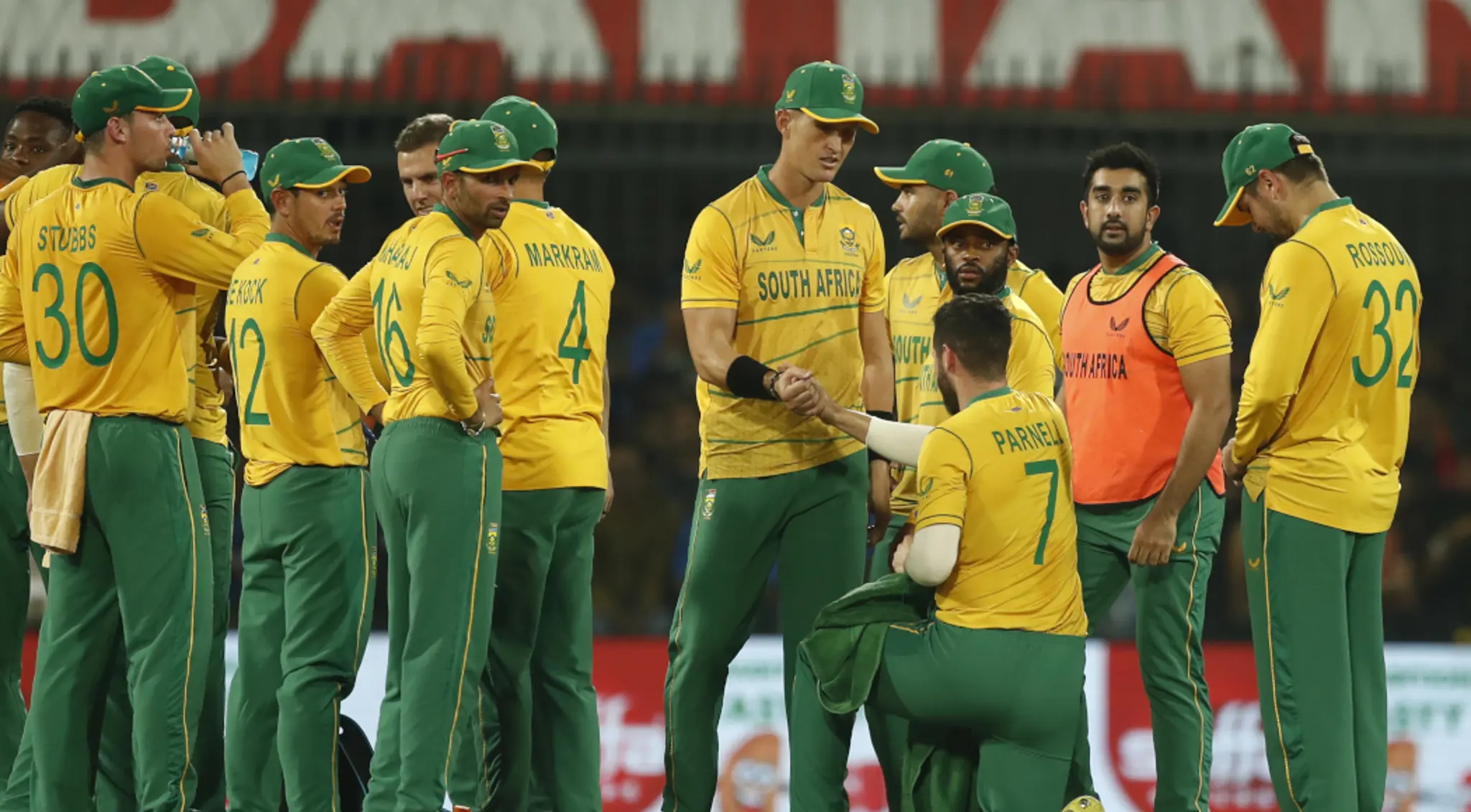Advertisement
What did the Proteas learn against India?

South Africa’s white ball squad will spend the next week briefly taking their eyes off the T20 ball to focus on a three-match ODI series in India which they must win 3-0 just to maintain a chance of qualifying automatically for the 50-Over World Cup in India next year.
They will then travel straight to Australia where they will have just under two weeks to acclimatise and prepare for their first game on 24 October.
What did they learn from the 2-1 series defeat to India?
Story by Werner Erasmus

Questions around Bavuma remains
Going into this series the Proteas captain’s position in the side was questioned in light of his SA20 snub and his underwhelming T20I stats. Unfortunately, his scores of 0 (4), 0 (7) and 3 (8) have done nothing to extinguish the fire of public opinion. While his coach and teammates have publicly backed him, it is becoming increasingly difficult to defend a player who has an average of 23.54 and a strike rate of 116.49 when it means keeping out Reeza Hendricks who scored two 70s, two 50s and 42 in his last five T20I innings.
Death bowling, a familiar concern
While the death bowling wasn’t tested in the first T20I, as India only needed to chase down a meagre total of 106, and in the third T20I they were eight wickets down by the end of the 13th over, the second T20I scratched open familiar wounds. The Proteas conceded an eye-watering 104 runs in in the last six overs as a deluge of full tosses, half-volleys and long hops were projected towards a thirsty Suryakumar Yadav and Virat Kohli. The help-yourself-buffet reached the dessert stage for India when Wayne Parnell served up five full tosses in over number 17 which cost 23 runs. The Proteas will need to execute their death bowling skills a lot better if they want to lift that elusive World Cup trophy.
Quinton de Kock discovers lost form
In 2021, up until the T20 World Cup in the UAE, De Kock had scored 455 runs in 10 innings at an average 57, a strike rate of 136 with five fifties to his name. From the start of the World Cup, up until the start of this series against India, De Kock had scraped together 136 runs in 11 innings at an average of 12 and a strike rate of 104. To say he was horribly out of form would be a compliment.
He was still visibly struggling when he reached 33 off 34 balls in the 2nd T20I against India by which time the required run rate had shot up to 19 an over and David Miller had cruised to 50 off 25 balls. Two sixes and a four against Axar Patel seemed to be the tipping point as he managed to finish on 69* (48 balls) in a losing cause and followed it up in the last match with a much more fluent and Quinny-like knock of 68 (43), which is what all Proteas fans love to see.
A middle order to celebrate
Centuries don’t come by often in this format, so it shouldn’t be too much of a surprise that this is the first time ever that a team recorded two hundreds in one series in less than 50 balls. Miller made his in 46 balls in the second match and Rilee Rossouw made his in 48 balls in the third match. With Aiden Markram ranked 4th in the world in T20Is and Tristan Stubbs taking to the international scene like a duck to water, the Proteas’ middle order is starting to look frighteningly powerful and should give the team confidence to set competitive totals or chase down imposing ones come the World Cup.
While losing a series ahead of the T20 World Cup is not ideal, the Proteas should take confidence in knowing that they can compete with and, when all departments work together, beat any side in the world. They just need that to happen when it matters most.
Advertisement